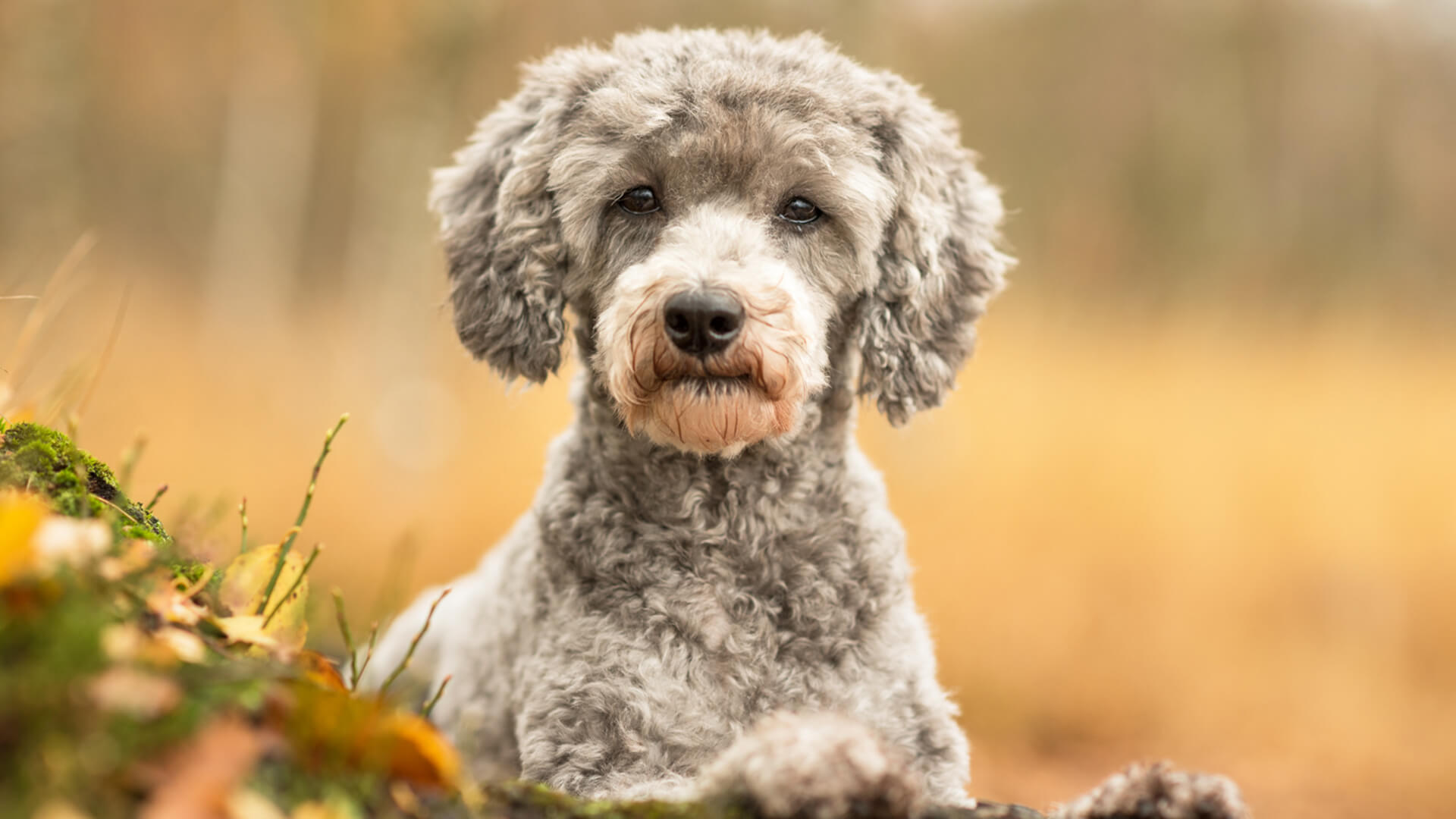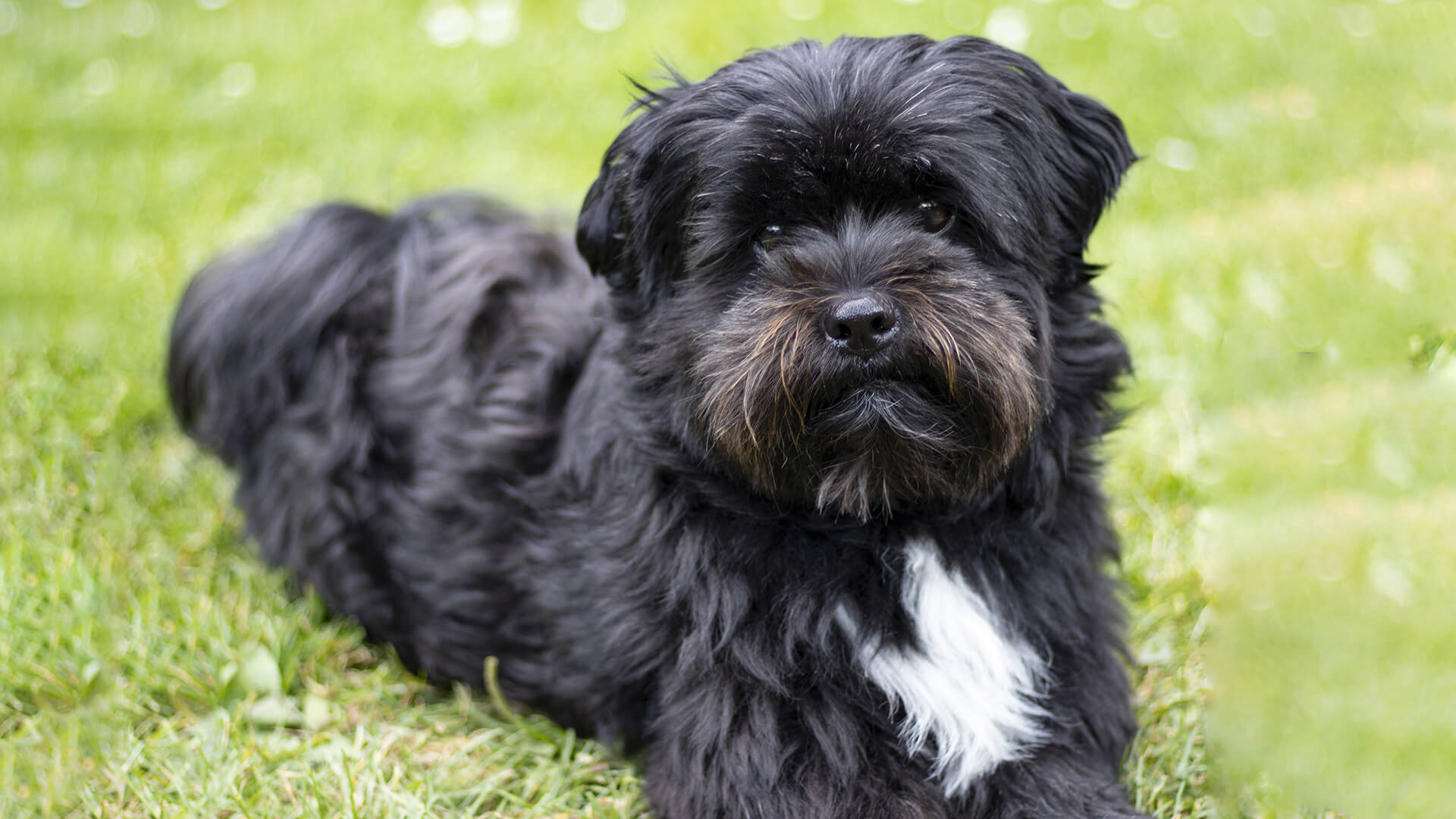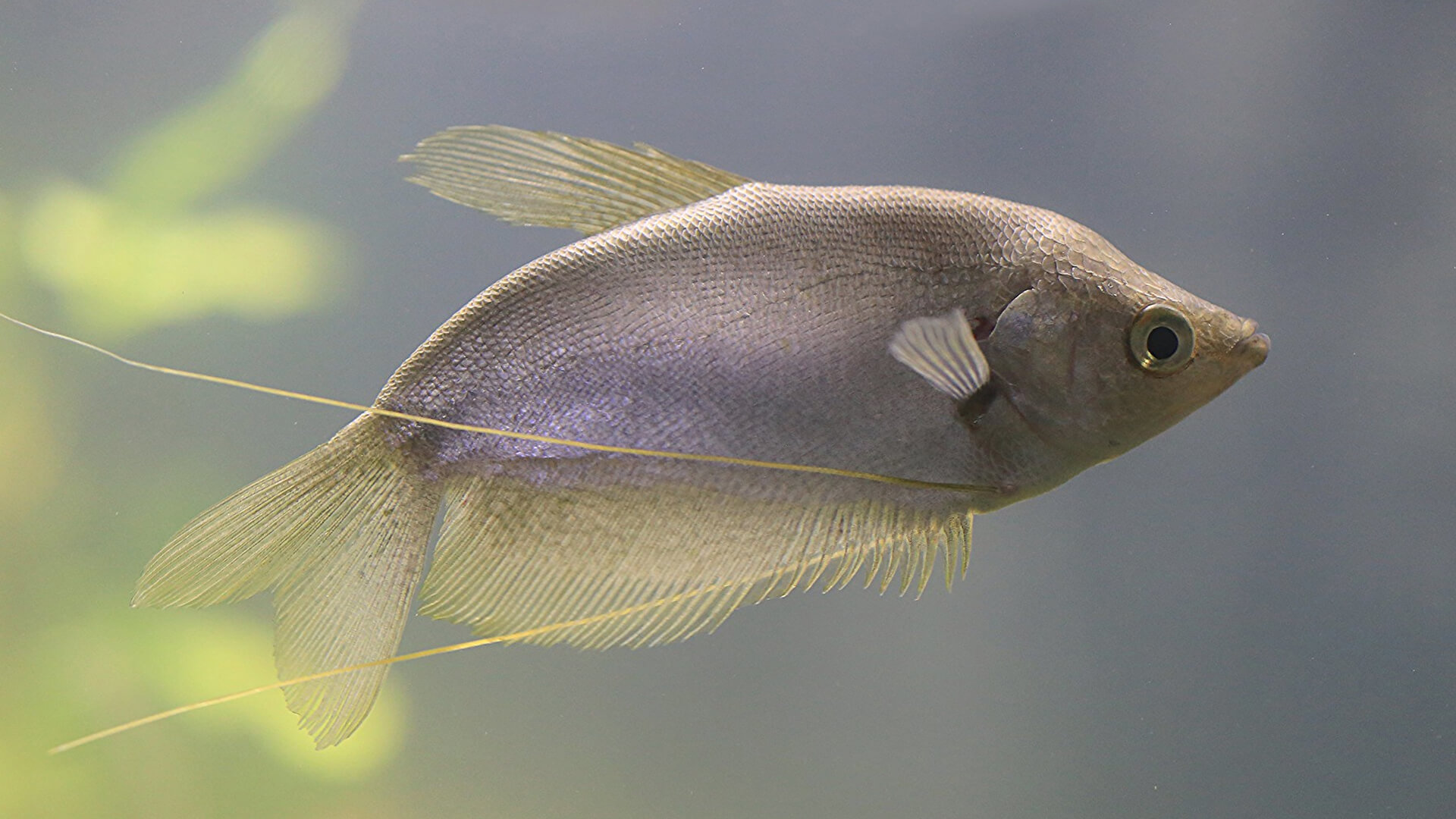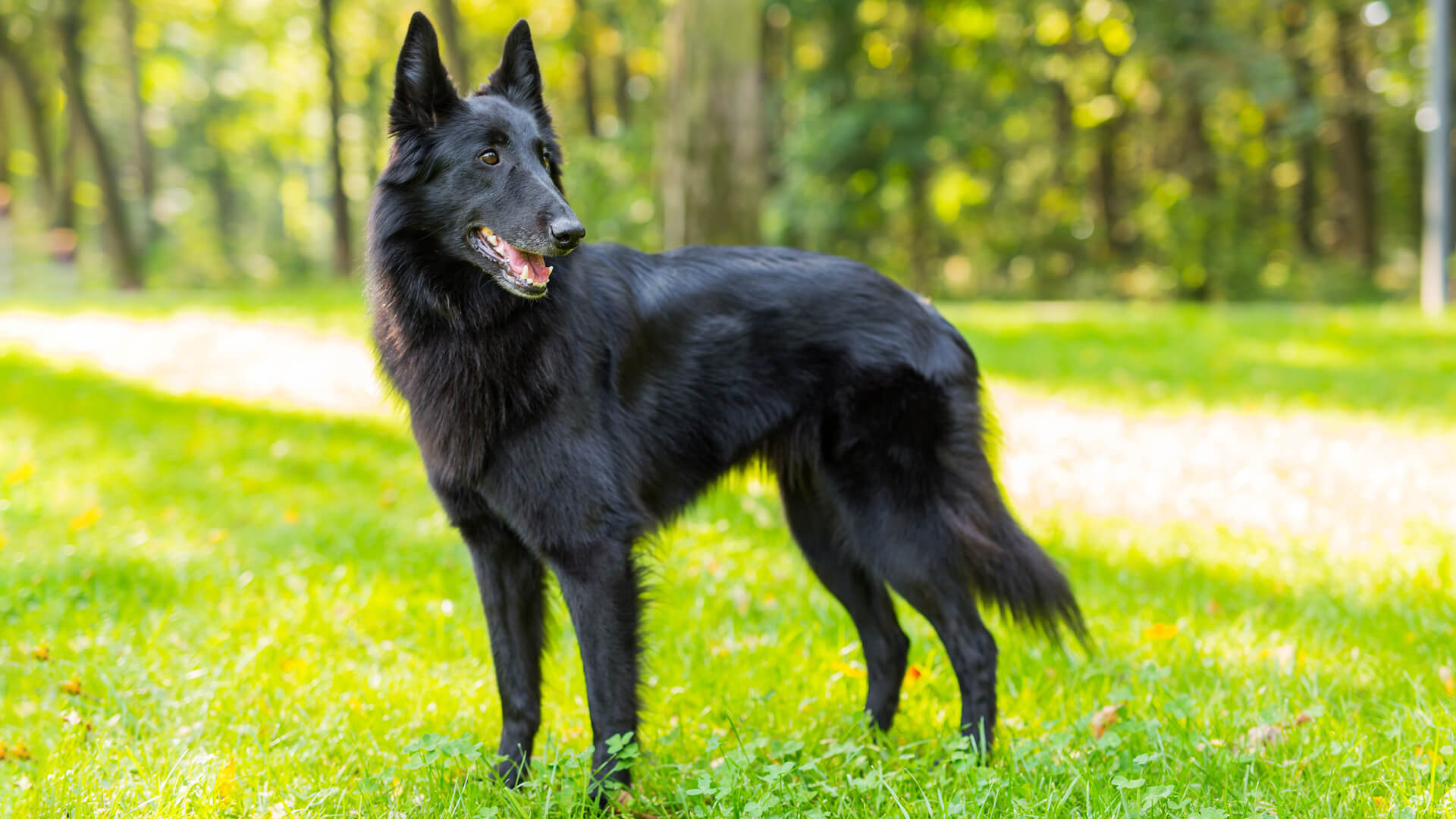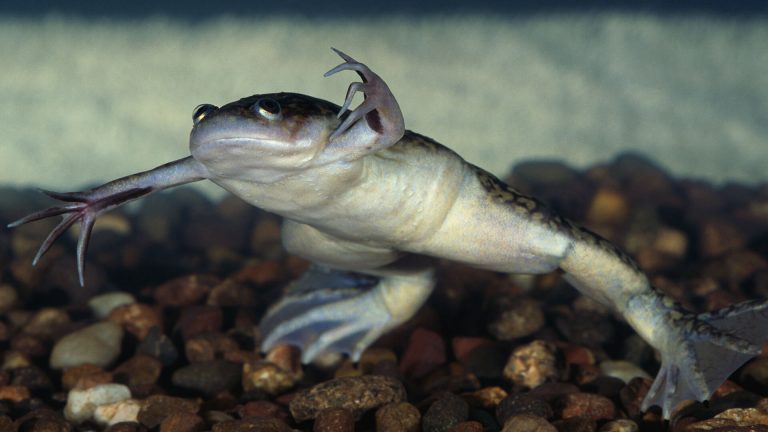White's tree frogs are one of the topmost choices of pets among frog lovers. They are quite popular for their friendly behavior. One can even hold them in their hands which is not usually possible with every other frog. So, this gives them a point of preference. To be noted, technique and experience of the owner and the comfort of the frog are essential to handle them. There's yet another interesting thing about these frogs. Unlike a lot of other frogs, they can be kept in groups. It helps in making the setup look more cheerful and doesn't need much additional care.
Originally found in countries including Australia, Indonesia and New Guinea, white’s tree frogs are small in size. Even when kept in groups, they don’t take up much space. This makes it convenient to keep them in apartments as well. Moreover, they stay engaged in themselves. It not only lessens the burden of interaction but also makes them entertaining to watch. These frogs are also well-suited for beginners. It is mostly because they are very easy to care for. Well, some amount of care is still required. But, it’s not something to worry about. This article discusses every point the potential owners would need to know.
Distinctive Features of White's Tree Frog
| Scientific Name | Litoria caerulea |
| Lifespan | Up to 20 years |
| Color | Green or blue-green |
| Size | 2.5-4 inches |
| Health Risk | Low |
| Tank Size | Minimum 20 gallons |
| Water pH | 6.0-7.5 |
| Filter Requirement | Low |
| Tankmates | Peaceful tree frogs or other compatible species |
| Unique Trait | Large, adhesive toe pads |
| Famous For | Its charming appearance and calm temperament |
| Temperament | Docile and easy to handle |
| Maintenance | Low |
| Adaptability | Moderate |
| Behavior | Generally good with supervised children |
| Personality | Nocturnal and arboreal |
| Social | Can be housed individually or in small groups |
White's tree frogs are known for their interesting appearance. Their eyes make them look sleepy and at the same time, their mouths seem as if they are smiling. This unique combination gives them an adorable look. Their sweet temperament is a cherry on the cake. As said above, they can be housed together with other frogs as well. However, it is to be noted that they coexist only with the frogs who are similar in size and belong to the same species. If there’s any difference in size then there’s a probability that the smaller one will end up becoming a meal.
These green little frogs are nocturnal creatures. If the owners want to interact with them, evening and night hours are the most suitable time. Another important feature is their skin sensitivity. Being amphibians, their skin is very absorbent. Hence, they can easily get affected by any chemical, even by the natural oil present on the human body. This is why the owners need to be careful while handling them. Apart from these, here are some other basic characteristics that will help the owners know more about their pet frogs.
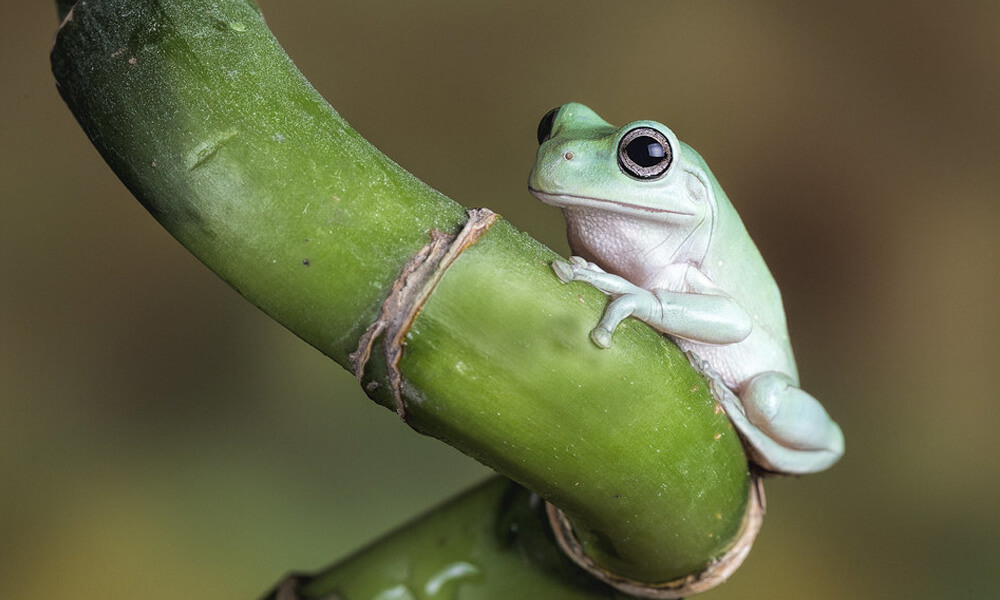
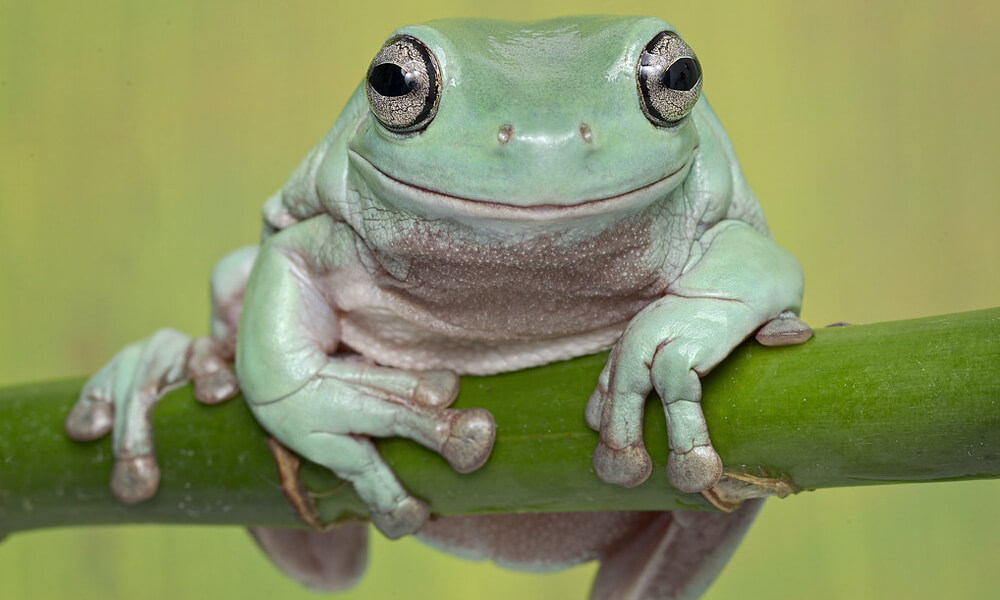
How to Take Care of a Pet White's Tree Frog?
White's tree frogs are relatively low-maintenance than other frogs. It is easy to care for them but a few things are to be considered. They may become used to being held by their owners but they need sufficient time and comfort. Also, the owners need to be careful. As mentioned, their skins are sensitive. So, the owners must thoroughly wash their hands before handling the frog. No soaps or detergents should be used either. Apart from this, appropriate shelter and diet are a must (quite obviously).
How to Setup a House for a Pet White's Tree Frog?
The owners can put their white's tree frog into a tank of 15 to 20 gallons. The ceiling should be enclosed tightly with a lid as they can easily jump out of it. The temperature of the tank should be 75 to 85 degrees Fahrenheit during the daytime while it should lie between 65 to 75 degrees Fahrenheit during the night. If necessary, putting a heater on one side will be a good idea. As for lighting, they don't have any specific requirements. The lights shouldn't be kept on during the night though. Adding on, keeping the tank 50 to 60 percent humid is also essential as it helps the frog to stay hydrated.
Next comes the décor part! Firstly, a mix of gravel, soil and moss should be used as a substrate. Now, tree branches, cork bark and plants should be added to the tank as well. There should be some hiding space for the frogs. Also, it is advised to provide them with a dark corner where they can take naps during the day. The owners should attempt to make the tank appear similar to their natural environment. Furthermore, the cage should be cleaned regularly and should be free from any unwanted or waste material. It is important to keep the pet frog in a clean and hygienic environment.
What to Feed a Pet White's Tree Frog?
The meal of a white's tree frog mainly consists of live crickets. Besides this, one may feed them other insects like cockroaches, beetles, earthworms, and so on. A pinkie mouse can also be offered once a month. The quantity of food is of utmost importance for these frogs. Obesity is very common among these frogs. If they are obese, it may become an underlying reason for other health issues. Hence, precautions should be taken beforehand.
The right quantity depends on the size and the condition of the frog. However, according to the generalized concept, juveniles should be fed daily and the adults twice or thrice a week. A bowl of water should be provided to keep them hydrated. Note that their bodies receive the water through their skins. So, the bowl should be big enough for them to get inside and soak themselves. At the same time, it shouldn't be too deep as they may end up getting drowned.
Health Concerns for a Pet White's Tree Frog
White's tree frogs are generally known to be very healthy provided they get a proper habitat to live further accompanied by an adequate diet. They do not fall ill very easily. However, there are a few things they are prone to. There is a fungal disease named chytridiomycosis that is very common among these frogs. It is caused by a fungus called chytrid. This can even prove to be fatal for the frog. And, only a few treatments are available for the same.
On a good note, this is usually found in wild frogs only. It is one of the major reasons why it is recommended to keep only captive frogs as pets. Besides this fungal disease, obesity and physical injuries are also something the owners need to be careful about. Obesity can lead to further health problems so it's best to avoid that. The warning symptoms of obesity would include lethargy and changes in appetite. If there's any suspicious behavior, the pet frog should be taken to a veterinarian as soon as possible.
What People Are Reading:
Frequently Asked Questions about Pet White's Tree Frog
Some of the generally asked questions are answered below:
Will white's tree frogs eat other frogs?
Yes, white's tree frogs may eat other smaller frogs.
Can I hold my white's tree frog?
Yes, the owners can hold them once they're comfortable enough.
Is a white's tree frog a good pet?
Yes, a white's tree frog proves to be a good pet owing to its well-behaved nature and easy maintenance.
Do white's tree frogs bite?
White's tree frogs don't possess actual biting teeth.
Can white's tree frogs swim?
White's tree frogs are not very good at swimming.
Are white's tree frogs poisonous?
No, white's tree frogs are not poisonous.

